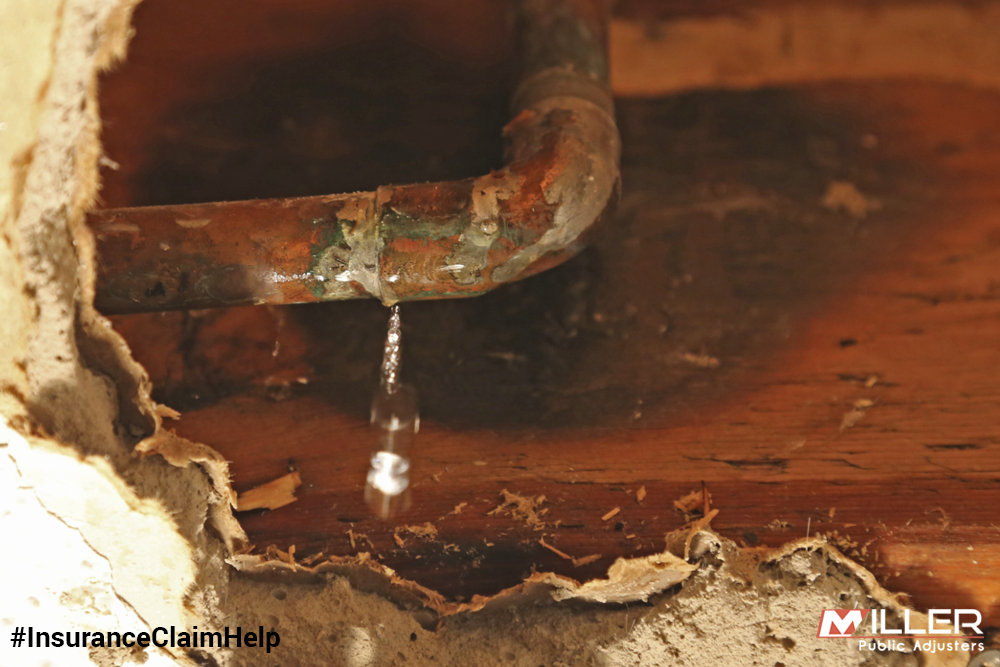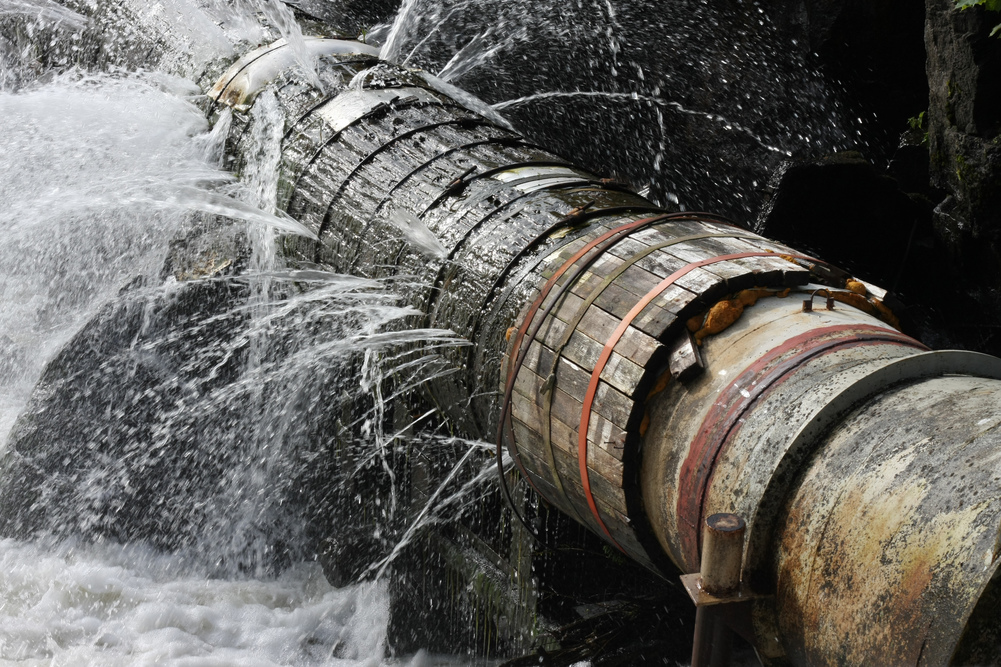Your Comprehensive Guide to Septic Tank Maintenance: What You Need to Know
Your Comprehensive Guide to Septic Tank Maintenance: What You Need to Know
Blog Article
How do you actually feel with regards to What To Do And What Not To Do When Dealing With Water Damage?

What should you do if a water pipeline ruptureds in your residence? The longer you wait, the more serious the damage that can take place to your residential property. For these reasons, you need to discover exactly how to act in the occasion of a ruptured water pipeline.
Shut Off the Main Waterline Valve
The first thing to do? Shut the shut-off shutoff. Try to find the neighborhood shut-off shutoff to switch off the water in one details location just. Go for the primary water line valve as well as turn it off if you do not recognize where the local shut-off shutoff is. This action will cut off the water right away in your whole home. Typically, the primary shutoff is located outside the house next to the water meter. If it's not there, you can additionally locate it in 2 places: in the cellar at eye degree or the 1st flooring on the ground. Commonly, home builders put the shut-off shutoff generally ground level washroom or ideal next to it.
Call Water Damages Repair Pros for Aid
After shutting the water resource, call the professionals for aid. This situation is not something you can do some do it yourself due to the fact that the pipes required to be repaired and also there is a demand to deal with the various other damages to your residential property. If you can not deal, look for help from a credible company offering 24/7 emergency services. With their specialist help, you can avoid much larger water damages consisting of warped baseboards, loose floor tiles, or harmed structures. Don't take this issue gently and also seek professional assistance for your total satisfaction and a trustworthy option.
Document the Damage For Insurance
While you're waiting on the pros to show up, obtain some documents of the damages caused by the errant pipe. Take pictures and video clips of everything. Do close-up shots of the damaged valuables and also places. Your documents will certainly act as proof for your property owner's insurance coverage. Keeping positive with this circumstance helps you to file a claim for coverage, which will further sustain you and also your family members to return on your feet.
Recover Things That Can Be Saved
As soon as you're done taking photos, analyze the harmed items and also secure the most important ones from the pile. Dry them off in a dry/warm location away from the broken location as well as try to preserve them as high as you can. Drag as much wetness as you can to the product so it can start to dry out.
Beginning the Drying Refine
You need to begin the drying out process as soon as possible. The good news is, the water from your waterlines is currently tidy so you don't have to bother with drain water. However, the moving water might have disturbed the dirt as well as debris in your floorboards and carpetings. In this instance, put some gloves on as well as start some troubleshooting. Use pails to dispose out the water. Remove as much water as you can from the surface areas with old towels. Switch on an electric follower or open your windows to advertise air circulation. These actions will accelerate to dry and also discourage mold and mildew and mold growth.
Professionals are the only individuals qualified to analyze correctly as well as deal with the burs pipes as well as succeeding damage. As constantly, pipelines don't simply instantly burst out of heaven. They generally offer silent warnings like gurgling paint, water stains. Odd sounds in the plumbing, caving ceiling, musty odor, or peeling off wallpaper. Take note of these indications and also do some safety nets so you can nip any problems in the bud.
What should you do if a water pipe bursts in your home? For these factors, you require to learn exactly how to act in the occasion of a ruptured water pipe. After shutting the water resource, call the specialists for help. With their professional aid, you can protect against much larger water damages consisting of warped walls, loose tiles, or damaged frameworks. The good news is, the water from your waterlines is already clean so you don't have to fret concerning sewage system water.
BROKEN WATER PIPES: COST TO REPLACE & WAYS TO FIX A PIPE
CAUSES OF A BROKEN WATER PIPE
A water pipe can break for several reasons depending on the environment you live in, type of pipe, and circumstances.
The most common cause of broken pipes is freezing. If you live in a colder climate, this could happen. When water freezes it increases in volume by 9% and the pressure in the pipes can go from 40 psi to 40,000 psi. Clearly, this could be detrimental to the pipes. Water freezing causes quick expansion, which puts stress on the pipes and could lead them to crack or weaken. When water thaws, it will leak out the cracks. Other changes in water pressure can also cause breakage. Another common cause of broken water pipes is age.
Depending on the material, water pipes can last anywhere from 70-100 years. But the older they get, the more susceptible they are to weakening and corroding. Older pipes coming into contact with another material could speed up the corrosion process as well. PVC pipes can become brittle with age, while copper is prone to corrosion and stress over time. Something that could also potentially break water pipes is when they move. They may move from construction or the house settling. Moving can stress the fixed pipe which may lead to a leak or burst pipe.
HOW MUCH WATER COULD LEAK INTO YOUR HOUSE FROM A BROKEN PIPE?
The amount of water that leaks depend on how big the break in a pipe is. If it is just a minor crack, water will slowly leak out. This isn’t as serious as a full broken pipe, but it can still cause significant damage to your home. Burst pipes can leak up to 10 gallons of water per minute. The amount of water leaked also depends on what appliance is involved. The water line to your refrigerator can leak ½ to 1 gallon per minute depending on water pressure. One toilet supply line may leak 2-3 gallons a minute and a washing machine hose will leak up to 10-12 gallons per minute.
TURN THE WATER OFF
Doing this first is imperative; everything else can wait. You need to deactivate the water supply to stop the flow of water and prevent more water from leaking into your home. Shutting off the water could potentially save you thousands in water damage repairs. Locating the water shutoff valve depends on the climate you live in. For colder climates, the valves are usually inside, such as in the basement. For houses in milder weather, the shutoff valves will probably be outside—either attached to an exterior wall or in an underground box with a removable lid.
OPEN A FAUCET
The next thing to do is to open a faucet or turn on a sink. This will relieve any remaining water pressure in the pipes and ensure a full-shut down.
GET RID OF THE WATER
The quicker you get rid of the water, the less water damage and mold there could be. Use a mop and a shop vacuum to help get clean up the water. Use towels to dry everything the best you can.
CUT AND REMOVE THE DAMAGED PIPE
Once you have shut off the water and drained the damaged water pipe, you can begin to fix the issue. Cut out the damaged section of the pipe with a pipe cutter, ensuring that you also cut one inch extra on each side of the damage. Once you get rid of the broken part of the pipe, you may begin repairs.
https://www.wmhendersoninc.com/blog/broken-water-pipes-cost-to-replace-ways-to-fix-a-pipe/

I'm very curious about The Do’s And Don’ts After Water Damage and I am praying you enjoyed reading the new blog post. Do you know another individual who is fascinated about the niche? Feel free to share it. Thanks for your time. Don't hesitate to stop by our website back soon.
Report this page